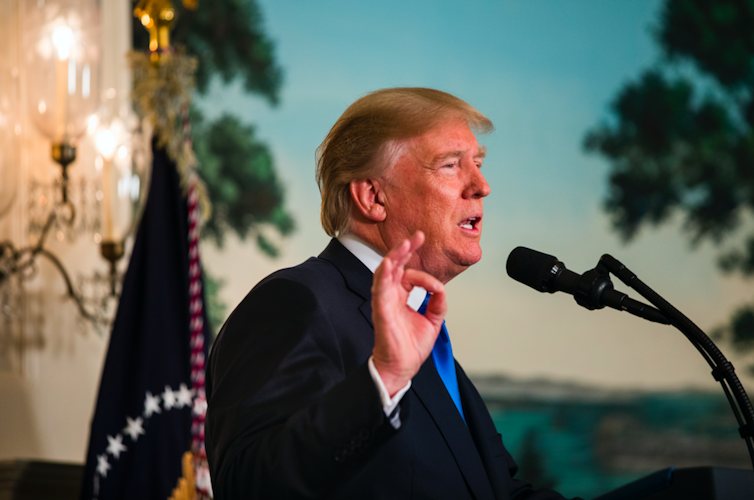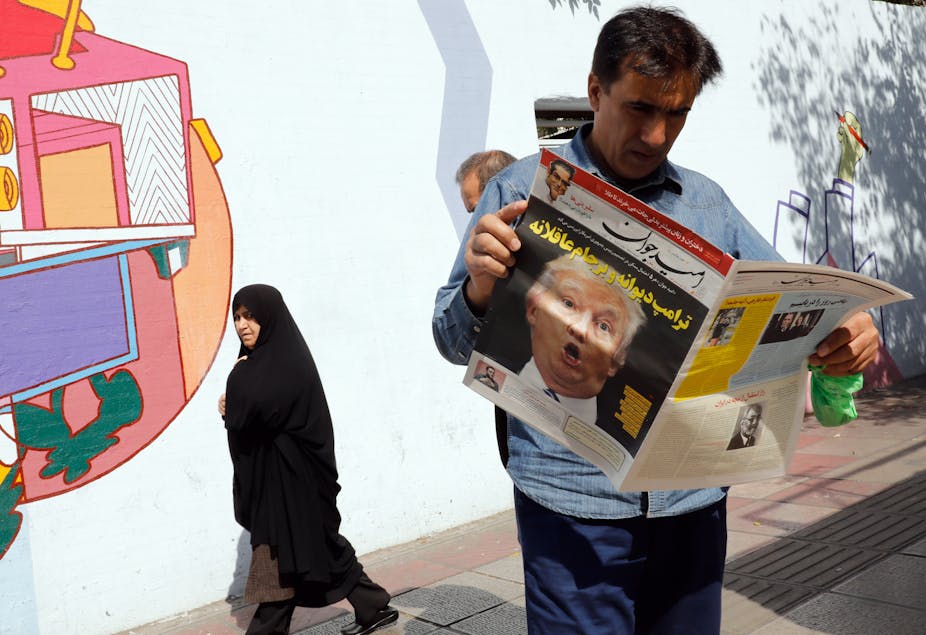Donald Trump hasn’t definitively killed the Iran nuclear agreement but he has lit the fuse that might blow it up eventually. Standing in the diplomatic room of the White House on October 13, he said that he could no longer certify Iranian compliance with the 2015 deal, known as the Joint Comprehensive Plan of Action (JCPOA). Iran, he said, is not living up to the spirit of the agreement.
Trump is unhappy that while Iran will be subject to a special monitoring and inspection regime until 2025, after that time, it will be treated like any other non-nuclear weapon state. He has also attacked what he calls “weak” inspections and the “near total silence on Iran’s missile programme”.
On the face of it, the president isn’t withdrawing from the deal. The requirement for the president to certify to Congress every 90 days whether or not Iran is in compliance with the deal’s terms is a matter of US domestic law. Even if Congress does not find an agreement on what to do with the deal, Trump announced, the deal will be terminated anyway. Congress has now 60 days to decide on whether it will re-impose sanctions.
This is a move that isolates the US and demonstrates a yawning gap between it and Europe. “The deal does not belong to any one country,” the EU’s high representative for foreign and security affairs, Federica Mogherini said. Kicking the issue over to Congress signals that Trump lacks the political commitment to maintain an agreement that is working to block off all pathways to a nuclear bomb.

Accusing Iran of not living up to the spirit of the agreement is a first step towards the US itself violating the deal. Re-imposing sanctions without clear evidence that Iran is not complying with its obligations would be a material breach of the agreement.
And since the deal has been endorsed by the UN Security Council, such a course could contravene international law. This will ratchet up regional tensions and make military confrontation more likely again. It might give Iran grounds to cease meeting its own commitments, needlessly restarting a crisis that had been resolved by the JCPOA.
The link Trump draws between the deal’s flaws and Iran’s regional policies, in addition, ignores the fact that US foreign policy has continued to make a distinction between the two. The complex web of sanctions woven over many years by US administrations has ensured that lifting US nuclear-related sanctions as part of the JCPOA’s implementation did not affect sanctions that were imposed over human rights violations and terrorism charges. The US has continued to sanction Iran because the State Department classifies it as a “state sponsor of terrorism”. Scuttling the Iran nuclear deal would not change that calculus.
What happens next
Undermining an agreement without making a convincing public policy case against it diminishes the credibility of the US to negotiate agreements in good faith and sets a dangerous precedent for the de-escalation of other nuclear crises.
So what are the options for the Europeans, Russians, and Chinese – the other partners that helped negotiate the Iran deal?
After decertification, lobbying efforts on Capitol Hill will continue to try and dissuade Congress from re-imposing sanctions. Even if Congress does re-impose sanctions, the participants in the deal can try to salvage what is left of the deal among themselves.
But whether Iran sees itself as bound by that agreement after a prior US violation is in doubt. Not only would a re-imposition of US financial sanctions constitute a material breach of the 2015 agreement, it would complicate the normalisation of relations between Iran and other countries. Trump authorised the US Treasury Department to impose direct sanctions against the Iranian Revolutionary Guard Corps (IRGC). But the US Treasury Department can also re-impose “secondary sanctions” on foreign companies – a powerful deterrent to stay away from doing business with Iran.
The EU could take measures to protect the “legitimate interests” of EU companies and issue regulations blocking US secondary sanctions, which it has done in the past. It could also seek remedial action against such sanctions through the World Trade Organisation. Likewise, China and Russia could envision alternative international payment systems.
In 2015, there was hope that the transactional nature of the deal (Iran verifiably curbing its nuclear programme in exchange for sanctions relief) might lead to a broader transformation of relations between Iran and the West. Trump’s new Iran policy aims to pre-empt its transformative power and put an end to its transactional purpose.
Trump has put the JCPOA onto a slippery slope, but it is the US, not Iran, that will be left internationally more isolated by his actions.

